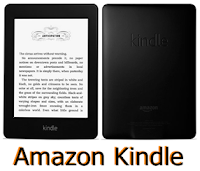 The iPhone 6 Plus is one of Apple's newest iPhone which is the successor to the iPhone 5S. It was unveiled on September 9, 2014 in Cupertino, California. These newest iPhone smartphones were released in the US, Canada, UK, Australia, Japan, Hong Kong, Germany, Singapore, France, and Puerto Rico on September 19, 2014.
The iPhone 6 Plus is one of Apple's newest iPhone which is the successor to the iPhone 5S. It was unveiled on September 9, 2014 in Cupertino, California. These newest iPhone smartphones were released in the US, Canada, UK, Australia, Japan, Hong Kong, Germany, Singapore, France, and Puerto Rico on September 19, 2014.According to reports from Apple, they hit a record 4 million iPhone units in the first 24 hours in pre-order sales. On September 26, 2014, the new iPhones will be available in 20 more countries like Italy, Netherlands, New Zealand, Russia, Saudi Arabia, Spain, Portugal, UAE, and others.
In a separate article, I compared the iPhone 6 and iPhone 6 Plus vs iPhone 5S. In this article, I will compare the iPhone 6 Plus vs Samsung Galaxy S5. Let’s see how these two giants stack up:
Operating System: the iPhone 6 Plus runs on Apple's brand new iOS 8 operating system. Apple has made some significant improvements in this new mobile operating system like improved notifications and search functionality. On the other hand, the Samsung Galaxy S5 runs on Google's Android KitKat 4.4 operating system with the TouchWiz user-interface. Comparing these two different operating systems is a matter of choice.
Processor: the Samsung Galaxy S5 comes equipped with a powerful quad-core 2.5 GHz Qualcomm Snapdragon processor compared to Apple's dual-core 2.0 GHz Apple A8 processor alongside with an M8 motion co-processor in the iPhone 6 Plus. Generally speaking, based on research, quad-core processors are better for multi-tasking, whereas a dual-core coupled with an M8 is expected to perform faster. Also, bear in mind that the new iPhones have 1 GB of RAM compared to the 2 GB RAM in the Galaxy S5.
Display & Screen Resolution: for the first time since the launch of the iPhone, Apple has introduced two sizes (4.7-inch and 5.5-inch). The iPhone 6 Plus has a 5.5-inch screen LED-backlit IPS LCD display with 1920 x 1080 pixels resolution (401 ppi). the Samsung Galaxy S5 features a 5.1-inch Super AMOLED display with 1080 x 1920 pixels screen resolution (432 ppi). Both these displays are Full HD resolution, but the iPhone has a wider display giving users a slight edge on screen real estate. Though an important point to make is that the blacklit displays (in the iPhone) consume more battery life compared to AMOLED display in the Galaxy S5.
Memory & Storage: the iPhone 6 Plus comes in three memory storage models, 16 GB, 64 GB, and 128 GB, whereas, the Samsun Galaxy S5 comes in two models, 16 GB and 32 GB. However, the Samsung Galaxy S5 also is equipped with a microSD slot (up to 128 GB) whereas the iPhone 6 is not. In terms of RAM, the Samsung Galaxy S5 has 2 GB of RAM compared to 1 MB on the iPhone 6 Plus.
Size & Weight: The dimensions (WxHxD) of the Samsung Galaxy S5 are 2.85 x 5.59 x 0.32 inches as compared to 3.06 x 6.22 x 0.28 inches of the iPhone 6. As you can see, the iPhone 6 Plus is slightly larger and slimmer compared to the Galaxy S5. Therefore, the iPhone 6 Plus also weighs more (172 gms) compared to Galaxy S5 (145 gms).
Cameras: The Samsung Galaxy S5 is equipped with 16 MP rear camera which has better resolution compared to the 8 MP iSight camera in the iPhone 6 Plus. Also, the front-facing in the Galaxy S5 has higher resolution (2 MP) compared to that of the iPhone 6 Plus (1.2 MP). Both smartphones are capable of recording 1080p HD quality video.
Battery Life: The iPhone 6 Plus has a non-removable Li-Po 2915 mAh battery compared to the Li-Ion 2800 mAh battery in the Samsung Galaxy S5. Based on preliminary tests, the iPhone seems to perform better when it comes to overall battery life compared to the Galaxy S5. The iPhone 6 Plus comes out with approximately 11.5 hours of battery life on Wi-Fi browsing compared to just over 10 hours on the Galaxy S5. In terms of 3G talk-time, the iPhone gives approximately 24 hours of battery life compared to 21 hours on the Galaxy S5.
Price Comparison: in the US the suggested retail price for the iPhone 6 Plus is $299 (16 GB model), $399 (64 GB model), and $499 (128 GB model) with a two-year contract. On the other hand, the Samsung Galaxy S5 is available as low at $79.99 (16 GB model) on Amazon.
Overall, as you can see, both, the Samsung Galaxy S5 and the Apple iPhone 6 Plus are top-of-the-line smartphones in their own respect. However, based on my opinion, overall the Samsung Galaxy S5 still has the edge, though the iPhone has a more premium look and feel to it. Check the video review below to see an in-depth comparison of Samsung Galaxy S5 vs Apple's iPhone 6 Plus which covers some other details like the operating systems, cameras, picture and video quality, and other specs.









.PNG)
















.PNG)
.PNG)
.PNG)




